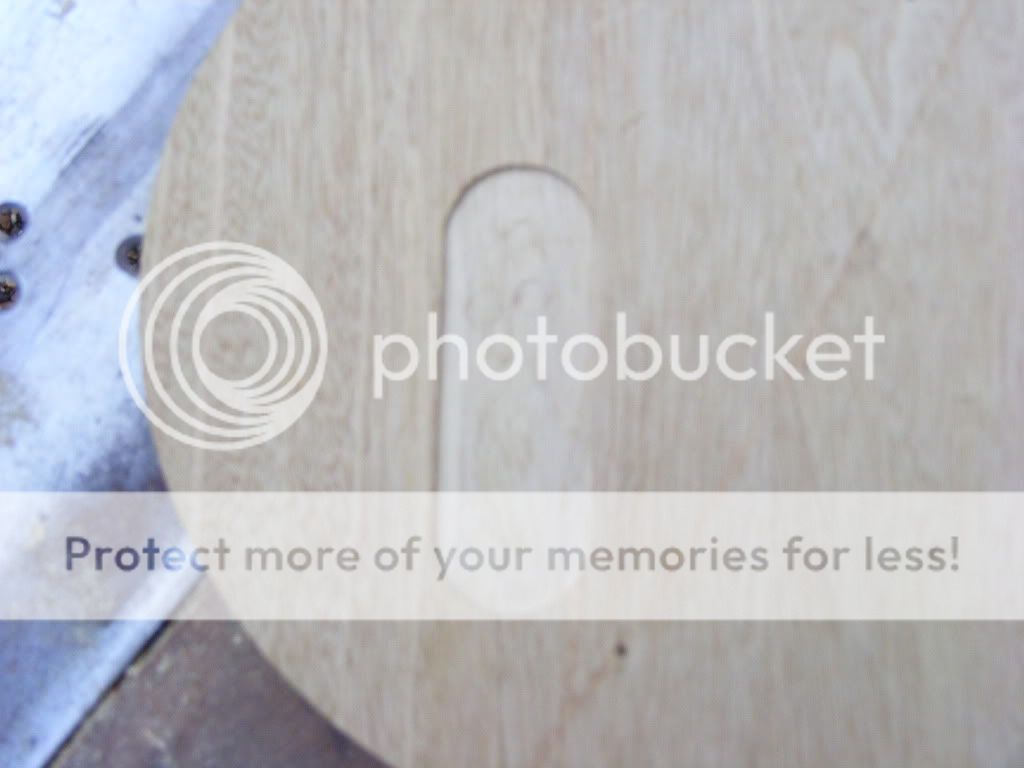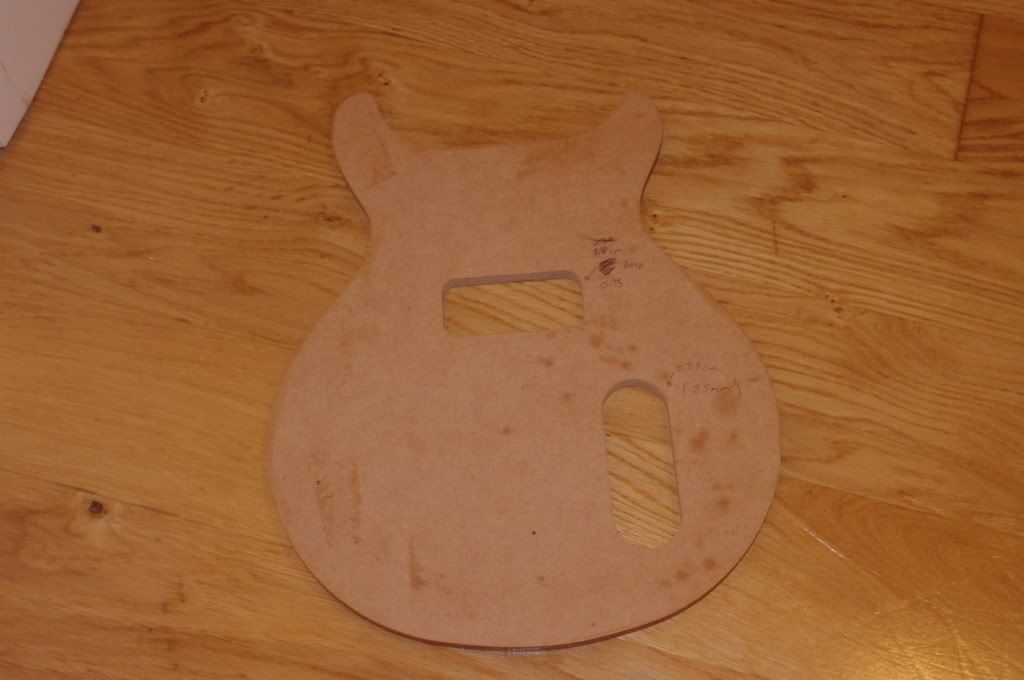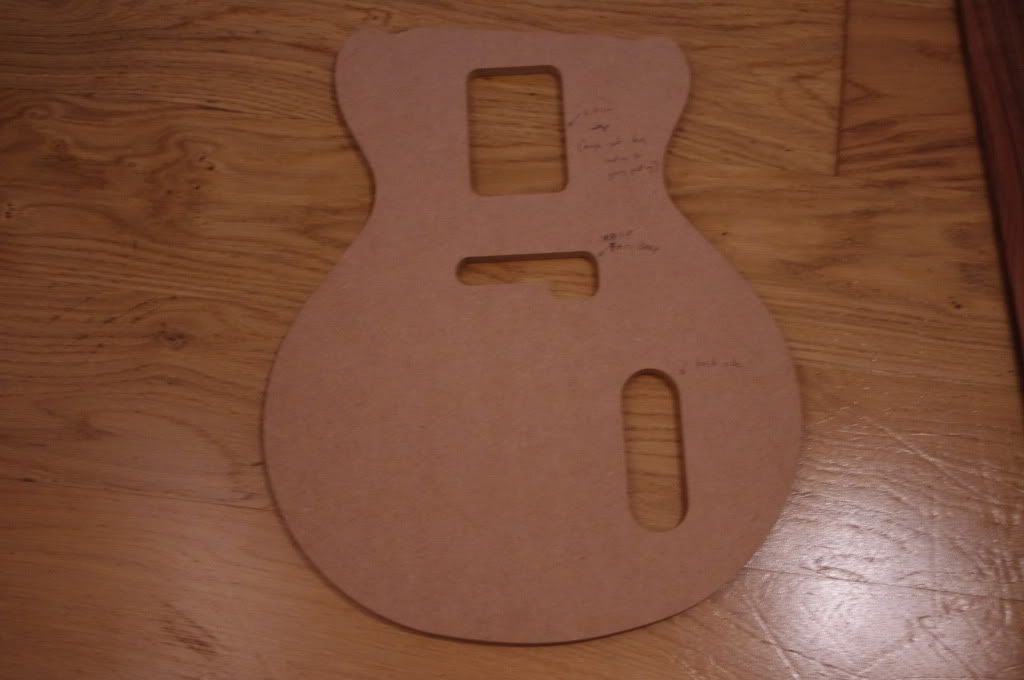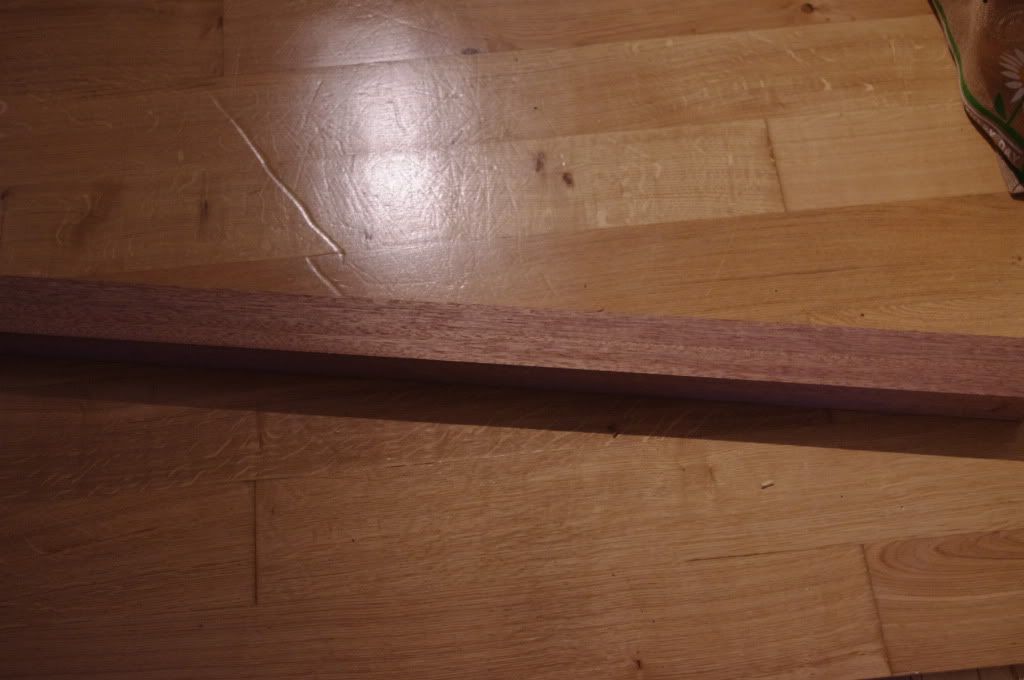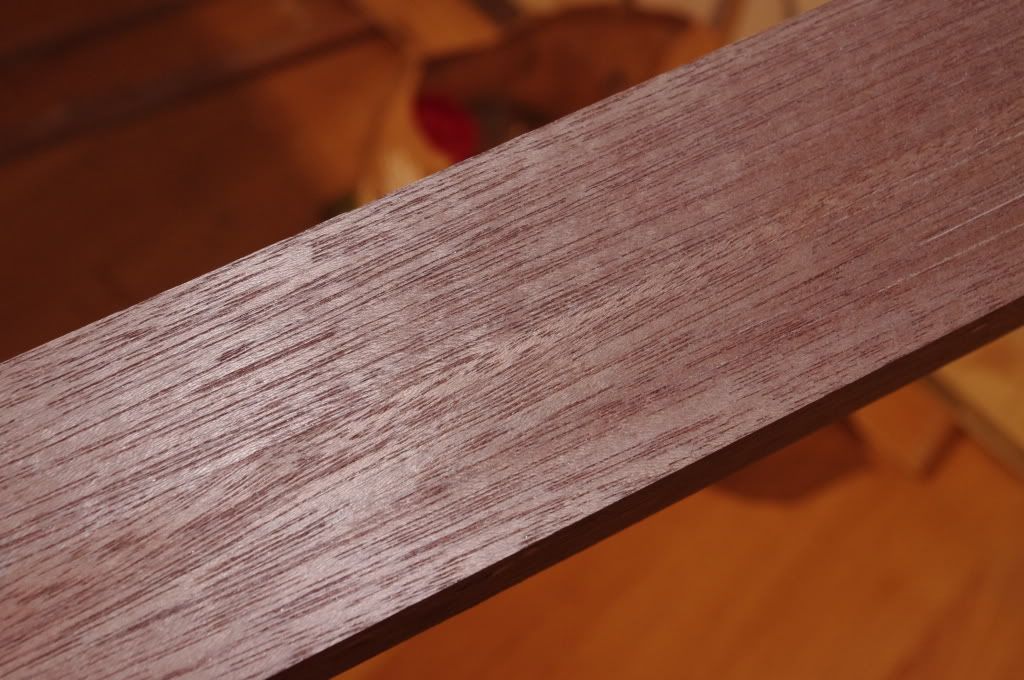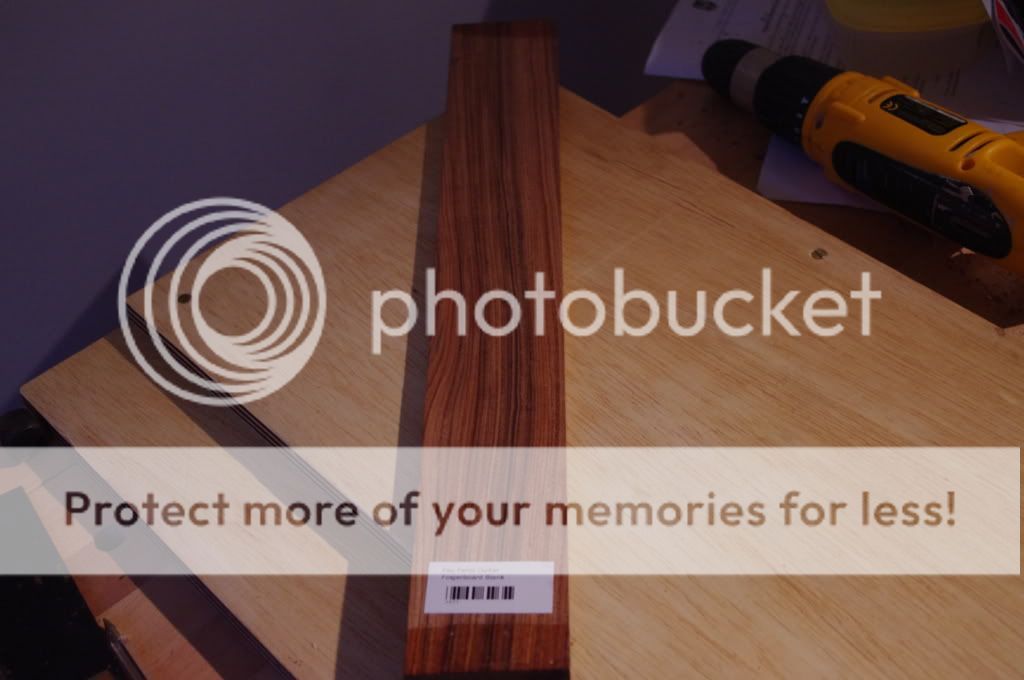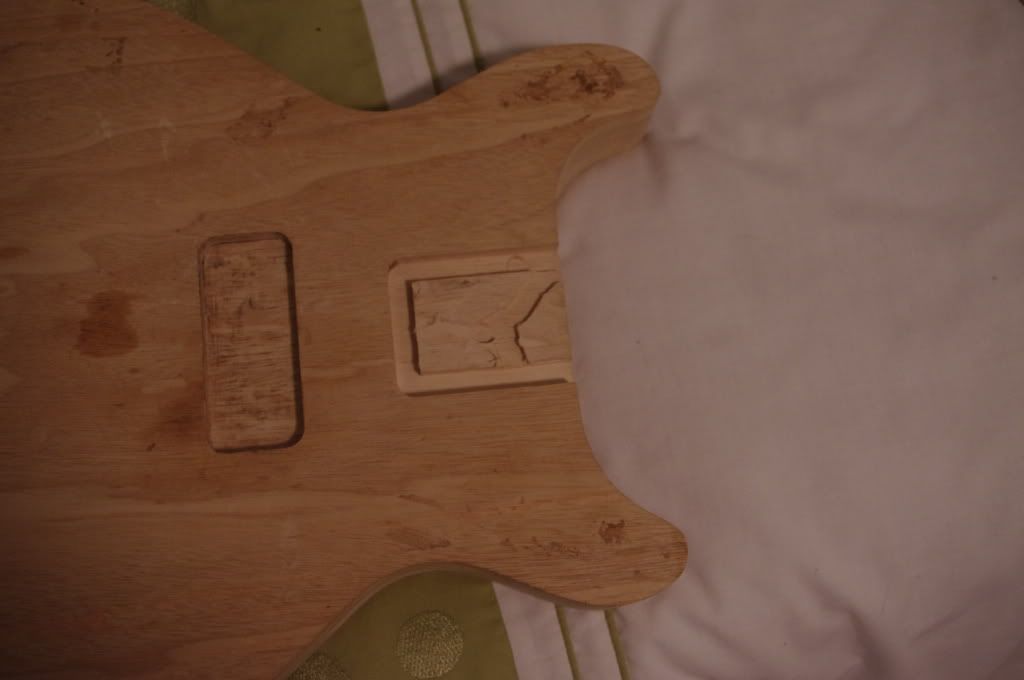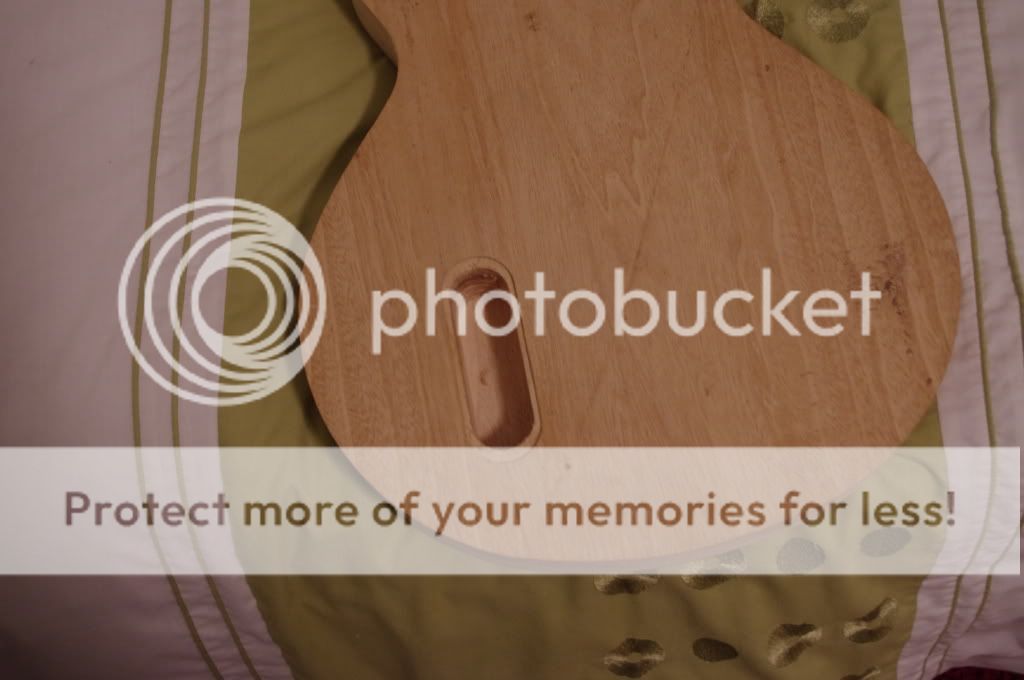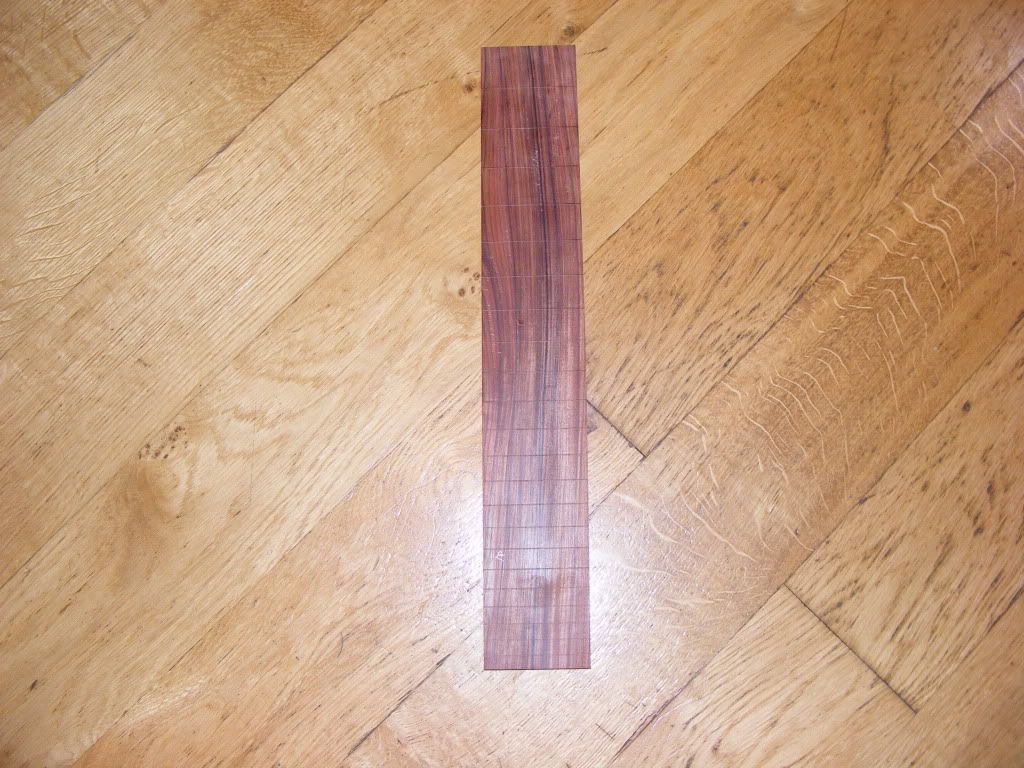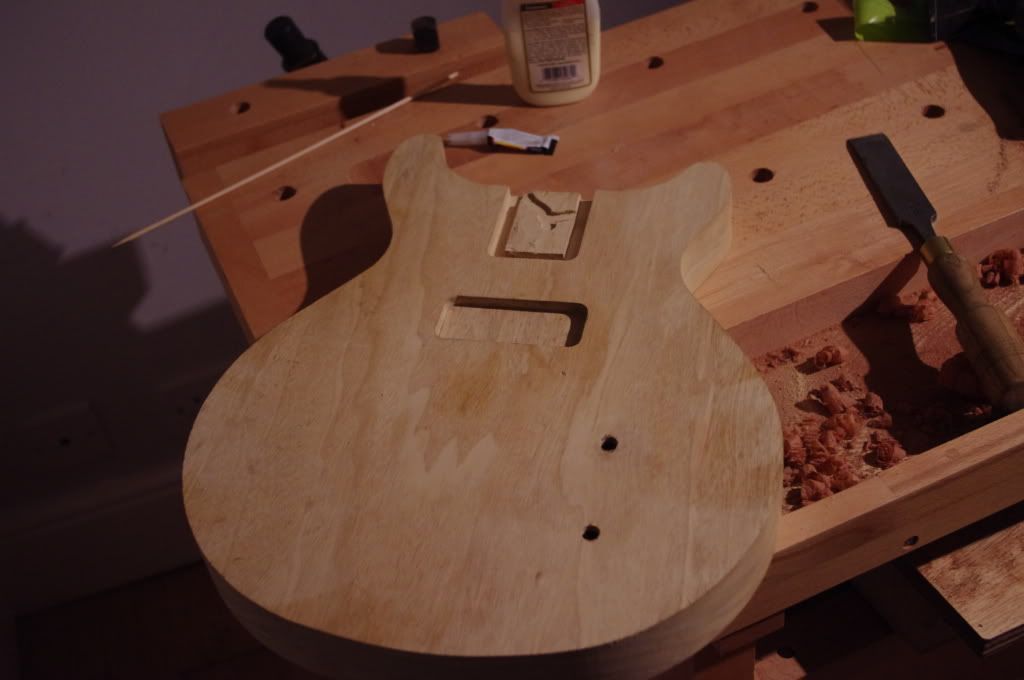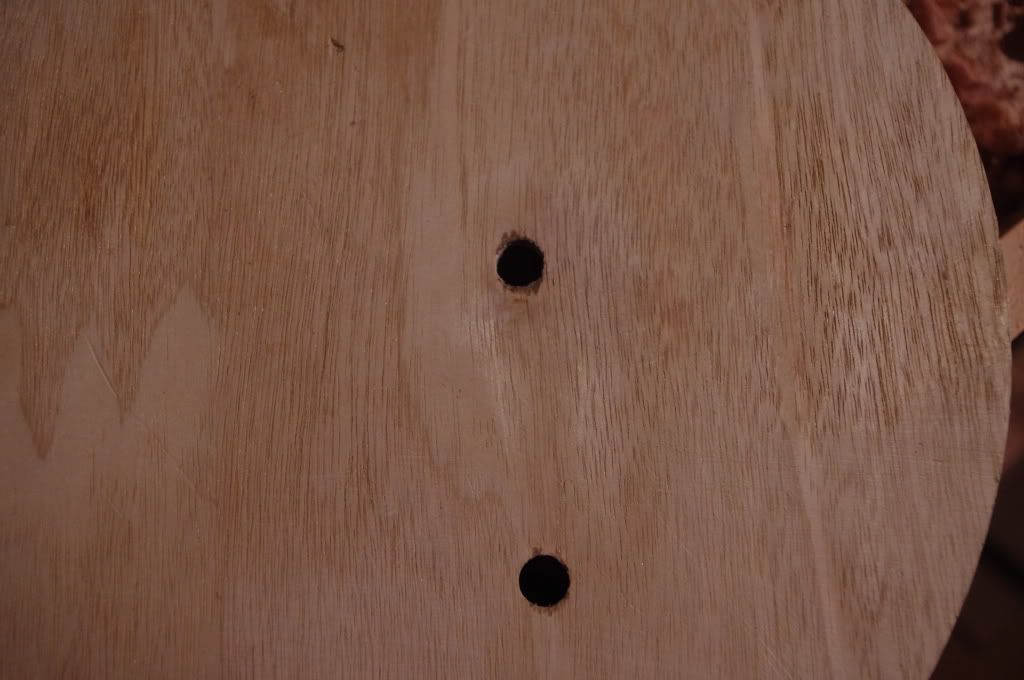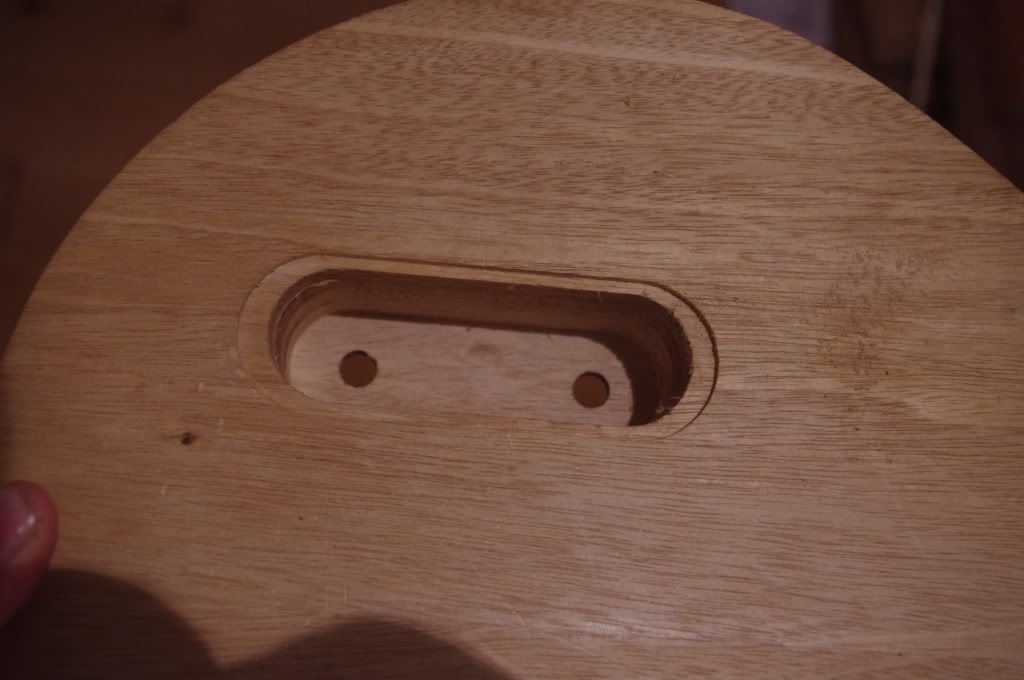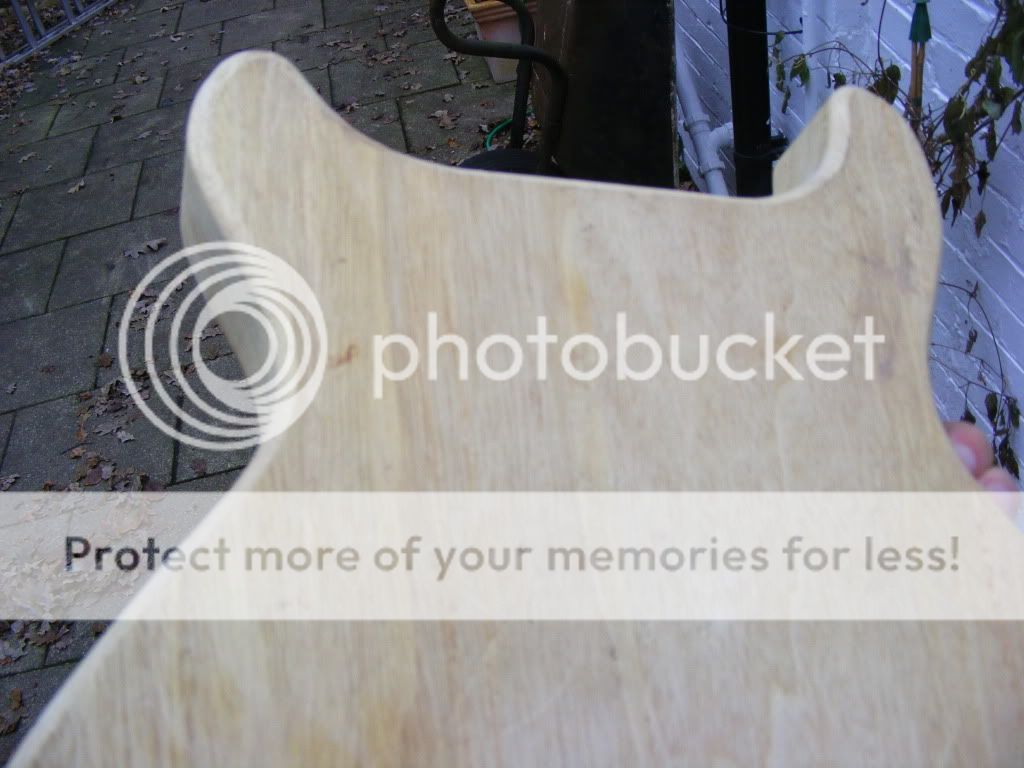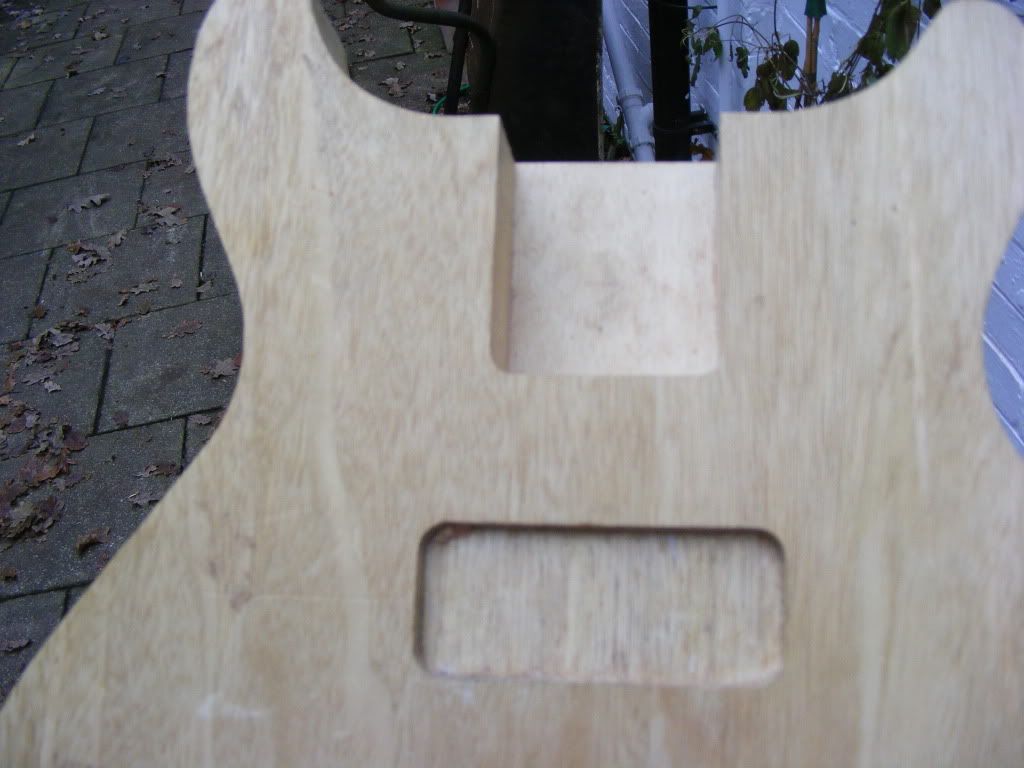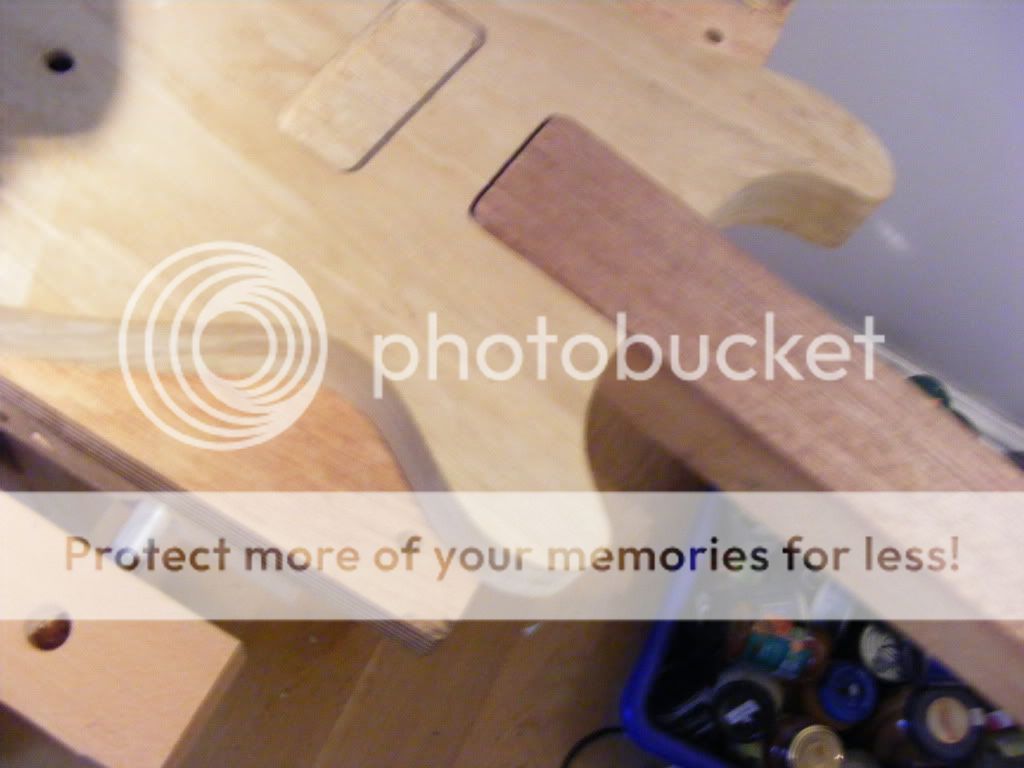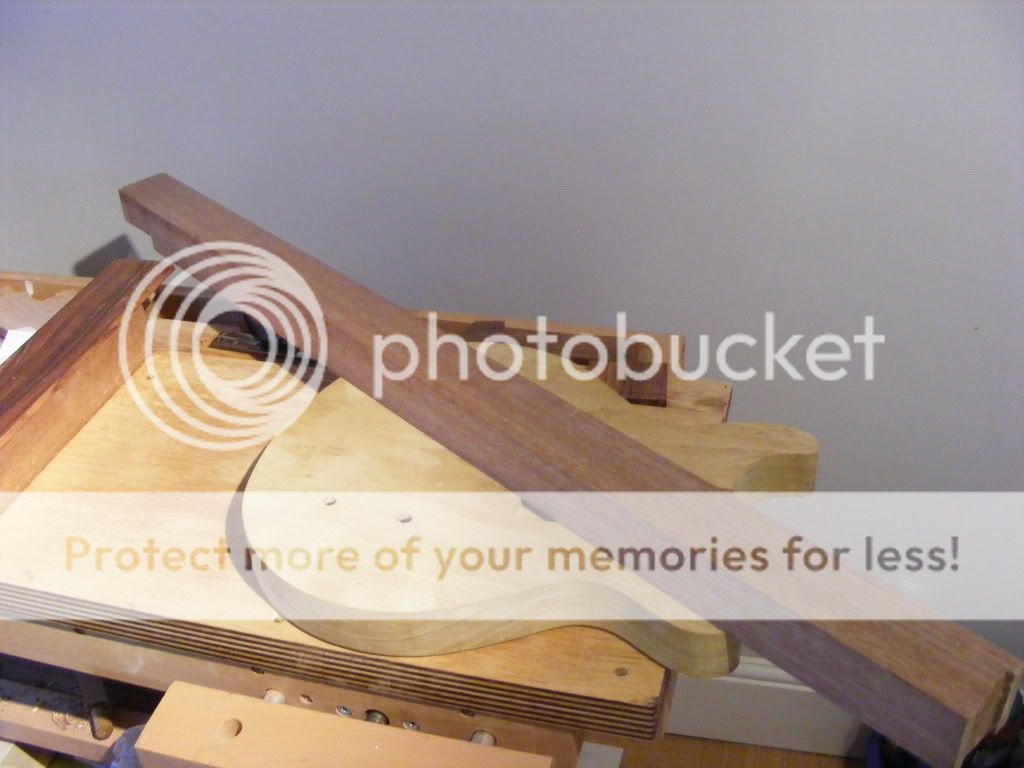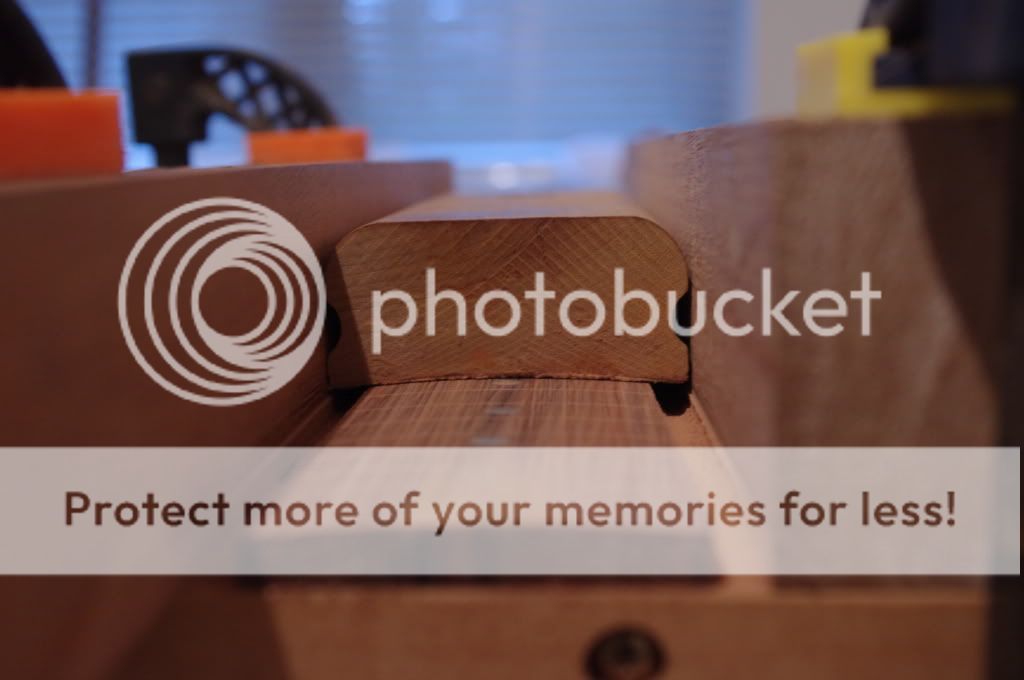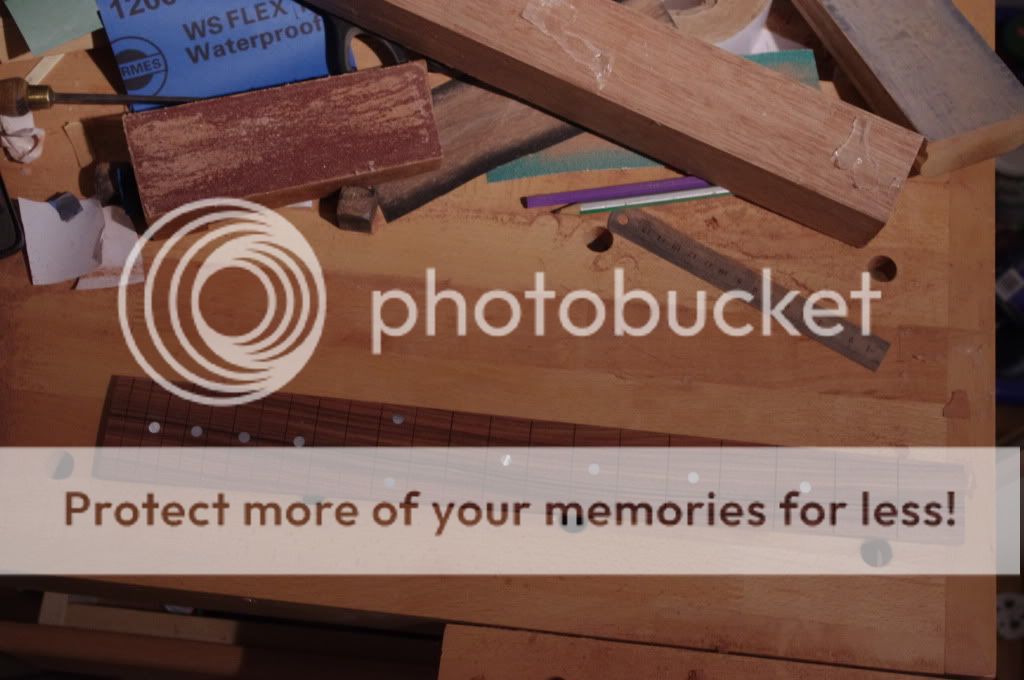LuptonM
Established Member
This is what I had done b4
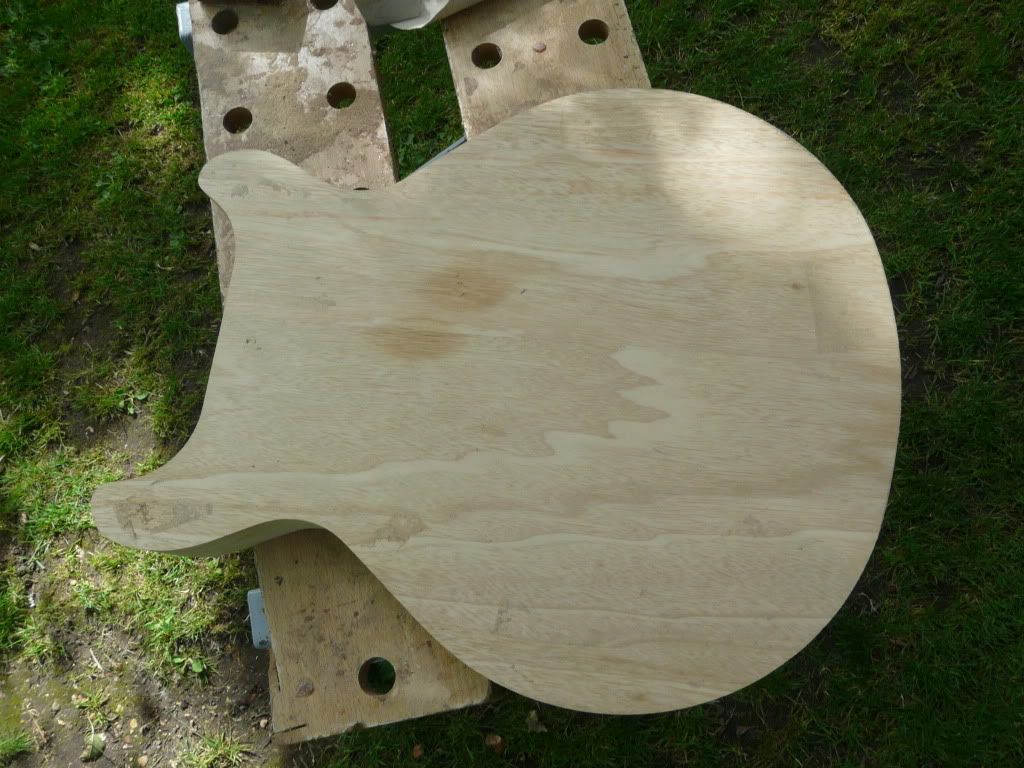
I'll post more images tomorrow maybe
I hope to repair my rookie mistake tomorrow (described below), if I can withstand the cold (my workshop is the outside, literally!!!!- I just have a tool storage area)
I went to Bob's (9fingers) workshop today and he got my neck wood cut on his pretty neat table saw. The orientation of the bits of wood is important when gluing as u want alternating top and bottom faces glued together (top and bottom faces being the faces of the wood b4 it was cut). I didn't really think about how I would distinguish the faces when I took the wood away but it was pretty easy as only one vertical face had been planed for reference of the table saw
Getting the axminster plate to work was a bit of a bummer but we (well Bob) managed to get it to work. The first problem was that the trend bush had its holes too deeply countersunk (the trend bush couldn't be tightly held in place) so Bob removed some metal off the holes in the axminster base so that the screws didn't bottom out. Since the screws went deeper into the base , the bosch bayonet guide bush mechanism had to be removed. Bob also made a replica of his own aligning mechanism (its basically a cone on a stick) on the the metal work lathe. Axminster should provide a Bob with every base
Bob actually has pretty much the same router as me. Weirdly the both of the bosch bushes (the one I bought that doesn't fit and the one originally was supplied with the router) fitted his router- possibly a manufacturing fault in my router!!!!
Oh so here comes my rookie mistake. I had written the depths of the p90 pickup cavity on my template but had got the inner and outer depths confused the wrong way round!!! So basically I've routed the outer pick-up part too deep. Its basically a rectangle with rounded corners. What I propose to fix this is to route the bottom clean with fostner boring marks, and then cut and sand a rectangular piece to fit- I know the radius of the corners since I designed the template in CAD. This repair won't matter too much as I am to paint it with nitrocellulose which will cover up any grain mis-alignment

I'll post more images tomorrow maybe
I hope to repair my rookie mistake tomorrow (described below), if I can withstand the cold (my workshop is the outside, literally!!!!- I just have a tool storage area)
I went to Bob's (9fingers) workshop today and he got my neck wood cut on his pretty neat table saw. The orientation of the bits of wood is important when gluing as u want alternating top and bottom faces glued together (top and bottom faces being the faces of the wood b4 it was cut). I didn't really think about how I would distinguish the faces when I took the wood away but it was pretty easy as only one vertical face had been planed for reference of the table saw
Getting the axminster plate to work was a bit of a bummer but we (well Bob) managed to get it to work. The first problem was that the trend bush had its holes too deeply countersunk (the trend bush couldn't be tightly held in place) so Bob removed some metal off the holes in the axminster base so that the screws didn't bottom out. Since the screws went deeper into the base , the bosch bayonet guide bush mechanism had to be removed. Bob also made a replica of his own aligning mechanism (its basically a cone on a stick) on the the metal work lathe. Axminster should provide a Bob with every base
Bob actually has pretty much the same router as me. Weirdly the both of the bosch bushes (the one I bought that doesn't fit and the one originally was supplied with the router) fitted his router- possibly a manufacturing fault in my router!!!!
Oh so here comes my rookie mistake. I had written the depths of the p90 pickup cavity on my template but had got the inner and outer depths confused the wrong way round!!! So basically I've routed the outer pick-up part too deep. Its basically a rectangle with rounded corners. What I propose to fix this is to route the bottom clean with fostner boring marks, and then cut and sand a rectangular piece to fit- I know the radius of the corners since I designed the template in CAD. This repair won't matter too much as I am to paint it with nitrocellulose which will cover up any grain mis-alignment




